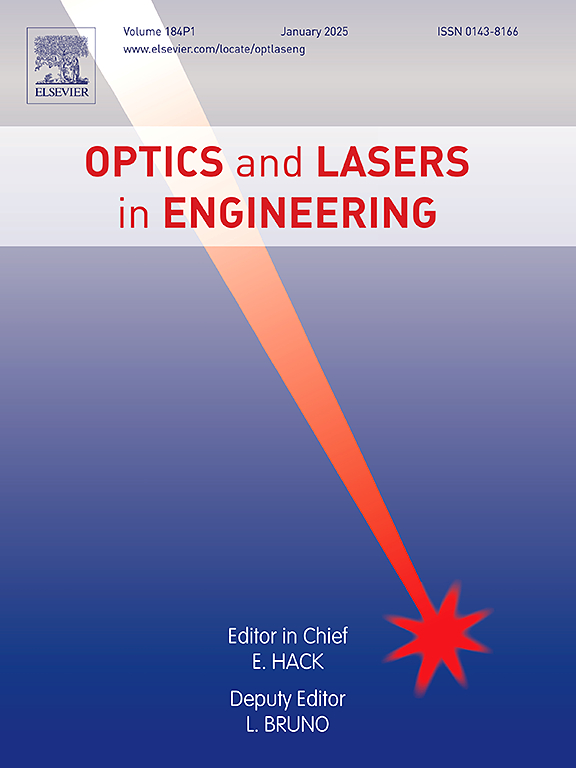Robust structured light measurement for large freeform surfaces
IF 3.5
2区 工程技术
Q2 OPTICS
引用次数: 0
Abstract
Structured light has shown substantial potential on large freeform surfaces measurements. However, existing methods encounter challenges associated with inaccurate initial pose estimation and cumulative errors in large-scale reconstructions. This paper introduces a robust automated measurement framework to address these issues. Initially, a structured light scanning platform is constructed to scan the target surface and acquire local point clouds. Subsequently, an initial pose optimization method based on a correction model is proposed to ensure high-quality initial poses for the local point clouds. Finally, a global registration method combining an improved graph optimization algorithm with the ICP (Iterative Closest Point) algorithm is introduced, enabling high-accuracy multi-frame registration and global optimization. Extensive experimental validations have been conducted. Compared to traditional methods, our approach reduces the RMSE (Root Mean Squared Error) from 1.43 mm to 0.93 mm, translation error from 0.98 mm to 0.53 mm, and rotation error from 0.21 degrees to 0.13 degrees. We believe that this study could provide a promising direction for achieving highly robust and accuracy 3D measurement over large areas.
大型自由曲面的坚固结构光测量
结构光在大型自由曲面测量上显示出巨大的潜力。然而,现有的方法在大规模重建中面临着初始姿态估计不准确和累积误差的挑战。本文介绍了一个健壮的自动化度量框架来解决这些问题。首先构建结构光扫描平台,对目标表面进行扫描,获取局部点云;随后,提出了一种基于校正模型的初始位姿优化方法,以保证局部点云的初始位姿质量。最后,提出了一种将改进的图优化算法与ICP(迭代最近点)算法相结合的全局配准方法,实现了高精度的多帧配准和全局寻优。已经进行了大量的实验验证。与传统方法相比,我们的方法将RMSE(均方根误差)从1.43 mm降低到0.93 mm,平移误差从0.98 mm降低到0.53 mm,旋转误差从0.21度降低到0.13度。我们相信这项研究可以为实现大面积高鲁棒性和准确性的3D测量提供一个有希望的方向。
本文章由计算机程序翻译,如有差异,请以英文原文为准。
求助全文
约1分钟内获得全文
求助全文
来源期刊

Optics and Lasers in Engineering
工程技术-光学
CiteScore
8.90
自引率
8.70%
发文量
384
审稿时长
42 days
期刊介绍:
Optics and Lasers in Engineering aims at providing an international forum for the interchange of information on the development of optical techniques and laser technology in engineering. Emphasis is placed on contributions targeted at the practical use of methods and devices, the development and enhancement of solutions and new theoretical concepts for experimental methods.
Optics and Lasers in Engineering reflects the main areas in which optical methods are being used and developed for an engineering environment. Manuscripts should offer clear evidence of novelty and significance. Papers focusing on parameter optimization or computational issues are not suitable. Similarly, papers focussed on an application rather than the optical method fall outside the journal''s scope. The scope of the journal is defined to include the following:
-Optical Metrology-
Optical Methods for 3D visualization and virtual engineering-
Optical Techniques for Microsystems-
Imaging, Microscopy and Adaptive Optics-
Computational Imaging-
Laser methods in manufacturing-
Integrated optical and photonic sensors-
Optics and Photonics in Life Science-
Hyperspectral and spectroscopic methods-
Infrared and Terahertz techniques
 求助内容:
求助内容: 应助结果提醒方式:
应助结果提醒方式:


